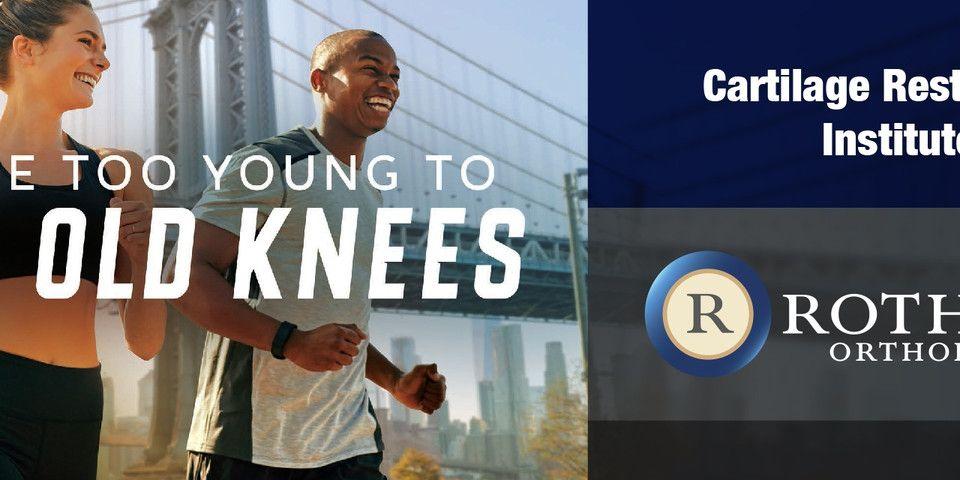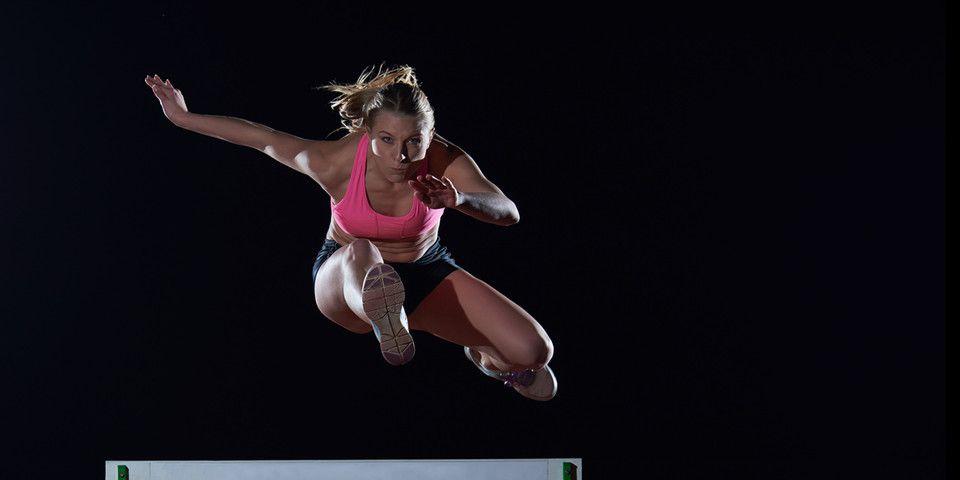Torn Labrum: Anatomy, Injuries & Treatments
Torn Labrums Are Commonly Experienced by Athletes. Learn More About These Injuries.
The hip provides support, stability, and mobility for athletes and non-athletes alike. These functions are essential for everyday activities and absolutely critical to those playing sports.
The hip powers running, jumping, and kicking motions. With so many important functions, a compromised hip can translate into a compromised lifestyle. Labral injuries, a common type of orthopaedic hip injury, are a particularly issue with some athletes.
If you or someone you love has experienced a torn labrum, you are acutely aware of the painful movements associated with this injury. As such, effective orthopaedic treatment ought to be at the top of your priority list. The hip experts at Rothman Orthopaedic Institute can help. From informing you about the nature of your labrum anatomy and injury to administering the most advanced, targeted Sports Medicine treatments options, we provide patients with all the resources they need on the journey toward healing.
The Anatomy of the Labrum
In order to understand the healing process for a torn labrum hip injury, it’s important to begin with an outline of how a healthy hip and labrum should function.
The hip is a ball-and-socket joint. The acetabulum (a section of the pelvis) makes up the socket, while the femoral head (the upper-end section of the femur) serves as the ball. Forming a gasket around the acetabulum and protecting the hip joint is a crescent-shaped pad of fibrocartilage known as the labrum.
The labrum serves three key functions. First, it acts as a suction-seal for the joint creating a healthy environment for the joint cartilage. Second, it creates a smooth, gliding surface between the ball (femoral head) and socket (acetabulum). Third, it helps to stabilize the hip joint. When healthy and intact, the labrum enables smooth, comfortable movements.
Labral Tear Injuries
A tear of the labrum can compromise the important function that this pad of fibrocartilage plays, causing pain with not only sports and athletics, but with activities of daily living as well.
Labral tears can occur in several different ways—and for many reasons. These include:
-
Tears of the acetabular labrum (the ring of cartilage that surrounds the acetabulum) resulting from structural issues concerning the shape of the hip joint. This condition is known as femoroacetabular impingement or FAI. In athletes with underlying FAI, the labrum is more likely to tear due to the high stress placed across the hip joint.
-
Traumatic injuries, such as a pivoting injury in a sport
-
High-impact overuse and repetitive motions that strain the hip, such as intense athletic activity
-
Gradual tearing of the labrum due to an ongoing degenerative condition (such as osteoarthritis)
Whatever the particular cause of an athlete’s torn labrum hip injury may be, painful symptoms are likely to follow. Most patients report pain in the hip and groin area. Typically, this pain is described as an ache with occasional sharpness. Sensations of catching or clicking within the hip joint can occur but are less common. For some patients, symptoms will not be readily detectable.
Torn Labrum Treatments
In addition to causing painful symptoms, a torn labrum can disrupt your athletic training schedule and your active lifestyle. Fortunately, there are a number of effective treatment options available for patients who have experienced a labral tear.
At Rothman Orthopaedic Institute, we specialize in Sports Medicine. Our physicians are trained in diagnosing and treating the types of injuries, such as tears of the labrum, which affect athletes. Athletes who have suffered a torn labrum will be paired with a Sports Medicine specialist who will compose a personalized regiment of care to address your symptoms and meet your recovery goals.
Initial care will typically include one or more of the following:
-
Rest
-
Activity modification
-
Physical therapy
-
Medications
If pain and other symptoms persist following these treatments, the patient’s Sports Medicine physician may recommend a surgical approach. The most commonly prescribed surgical operation for a labral tear is a hip arthroscopy. Arthroscopies are advanced, minimally-invasive surgical procedures that involve the repair of the labral tear and correction of the FAI. Not every labral tear needs or should have surgical intervention.
Schedule an Appointment to Repair Your Torn Labrum
If you or someone you love has experienced a torn labrum hip injury, it is important to seek out care from a qualified hip specialist or Sports Medicine physician. Injured athletes will find the most advanced, elite-grade care available at Rothman Orthopaedic Institute. Our specialized doctors, surgeons, and therapists bring a unique level of experience to the table, ensuring that you receive the best possible treatments and results.
To learn more or to schedule an appointment at Rothman Orthopaedic Institute, please visit us here or contact us at 1-800-321-9999.
Related Physicians
Related Specialties
Related Conditions
Related Treatments
Related Programs
-

Cartilage Restoration Institute
This is a center where patients can go to have their disabled joint biological resurfaced, realigned, and stabilized without having the joint replaced by artificial materials such as metal and plastic. It is well known that the outcomes of patients under the age of 50 undergoing artificial joint replacement are not as good as we would like. Therefore we feel the future of Orthopaedics is to try to restore a joint back to its original anatomy by realignment, ligament reconstruction, and cartilage restoration.Read More -

Women’s Sports Medicine Program
The Women’s Sports Medicine Program at the Rothman Orthopaedic Institute is the first of its kind in the Philadelphia metro area and one of only several such programs specializing in the comprehensive care of the female athlete in the country.Read More




